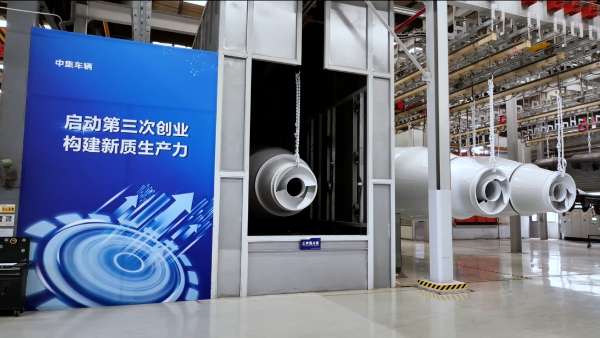On November 12, 2025, a passenger vehicle accidentally slid down the "sky ladder" at Tianmen Mountain Scenic Area in Zhangjiajie, Hunan Province, crashing through part of the guardrail. Video of the incident quickly spread online, sparking public skepticism about the automaker's marketing tactics.
This marketing mishap not only embroiled the brand in controversy but also raised a crucial question for the entire industry: when automakers are obsessed with creating "safety spectacles," how should we truly understand vehicle safety? Have the bottom line of marketing and the essence of safety been subtly misaligned in the race for attention?
Behind this marketing disaster, who has "hijacked" safety?
In the Tianmen Mountain incident, the vehicle's uncontrolled slide down the steep steps, while not causing any injuries, exposed the marketing campaign's disregard for real-world road conditions. Industry insiders pointed out that scenic area steps are not designed for vehicle use; such performances are more of a gimmick than a reasonable verification of safety performance.
When experiments deviate from real-world logic, the public naturally questions: are you showcasing safety capabilities or just a marketing script? Behind the controversy, the industry truth is becoming increasingly clear: safety is not something achieved through a staged performance, but rather through end-to-end quality control, countless real-world verifications, and long-term user experience accumulation.
When marketing degenerates into "performance-style safety," true safety standards become blurred, and industry credibility is damaged. The bottom line for vehicle safety should be respect, not performance.
Safety is not a number, but every kilometer on the road.
As a means of transportation, the safety value of a car is always anchored in the user's daily experience—for passenger cars, this means stability when braking in the rain and occupant protection after a collision; for commercial vehicles, especially concrete mixers, it means braking reliability under heavy loads and safety when navigating complex construction site conditions. These cannot be verified through a single extreme test.

The fundamental difference between testing and real-world experience is particularly evident in the commercial vehicle sector. While passenger car crash tests have a standardized system, engineering vehicles like concrete mixer trucks face incredibly diverse operating conditions: the high temperature and humidity of Hainan tests battery protection capabilities, the bumpy road conditions of construction sites in Henan examine the strength of the vehicle body structure, and the 24-hour continuous operation of concrete mixing plants in Tianjin places stringent demands on the reliability of the powertrain. No single test can cover such complex usage scenarios; true safety can only be achieved through repeated refinement in long-term operation.
To be truly safe, one must be robust; repeat purchase rates are the key to safety.
Safety is not a performance "tested," but a guarantee "developed through use." It is centered on real customer experience, using technological innovation to adapt to diverse operating conditions, and using repeat purchase data to demonstrate safety capabilities.
CIMC Vehicles' concrete mixer trucks feature a modular design and a low center of gravity, making them more stable and safer when driving on rough construction roads and turning, reducing the risk of rollover.
Automated powder coating and flexible welding processes further ensure the consistency of the vehicle body structure's strength from the production source, giving every vehicle the fundamental capability to handle complex operating conditions.
The intelligent superstructure control system boasts excellent compatibility and ease of operation. It can be equipped with intelligent modules such as electronically controlled constant speed, intelligent collision avoidance, intelligent weighing, remote control, water metering, and tank opening sealing, effectively enhancing the convenience and safety of vehicle use.
The service network covers 31 provinces, municipalities, and autonomous regions across China and exports to over 50 countries and regions. There are over 200 authorized after-sales service stations providing 24/7 service.
Customer choices speak for themselves. A customer in Tianjin, after their initial purchase, made a second order due to a positive user experience; a building materials company in Xiamen selected CIMC from multiple bidders, even securing an order for 40 new energy mixer trucks with full payment; existing customers in Jinan, Kaifeng, and other areas continue to renew their contracts, integrating CIMC mixer trucks into their long-term supply chain.
Behind these repeat purchases lies the stable performance of CIMC mixer trucks in real-world scenarios such as heavy-duty transportation, continuous operation, and complex road conditions; driver approval of braking response and ease of operation; and, more importantly, the company's affirmation of both operational efficiency and safety. Compared to dramatic videos of "trucks crashing into each other," these feedbacks from the front lines of the market are the most powerful proof of safety.
The tire tracks on Tianmen Mountain will eventually be washed away by rain, but the industry's understanding of the essence of safety should not fade.
True safety isn't on stage, but on the road; it's not in a second of footage, but in the real experiences of every customer. It's not about gimmicks, but about companies that focus on product development, constantly optimizing every vehicle, every transport, and every operational detail.
When the industry is swayed by hype, it needs more people to uphold common sense, respect for safety, and authenticity. Because for commercial vehicle users, so-called "safety marketing" ultimately cannot compare to a simple but most important wish—to drive out safely and return home safely.




